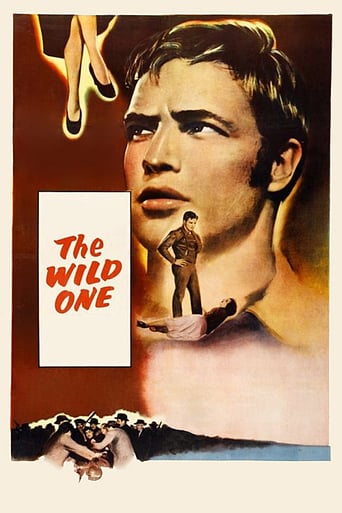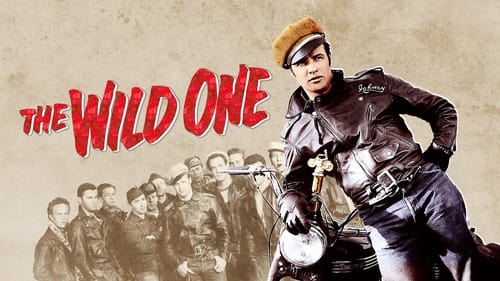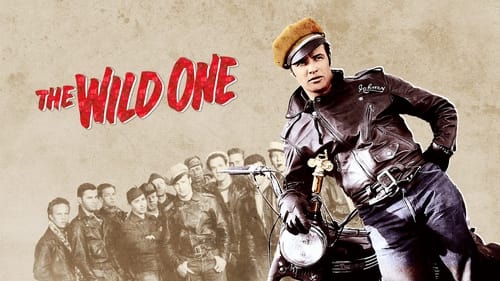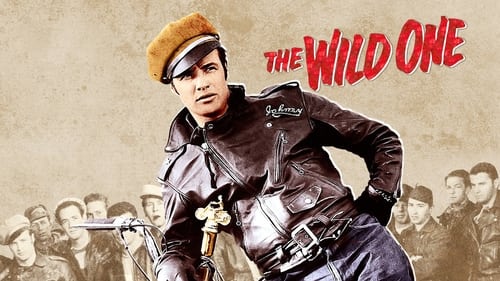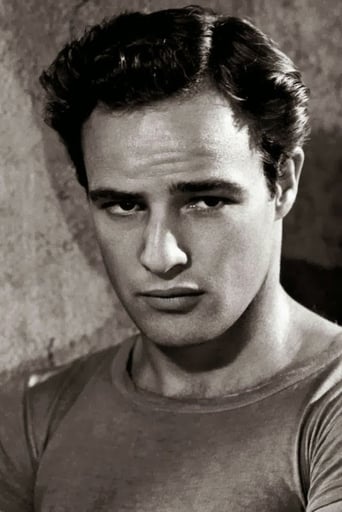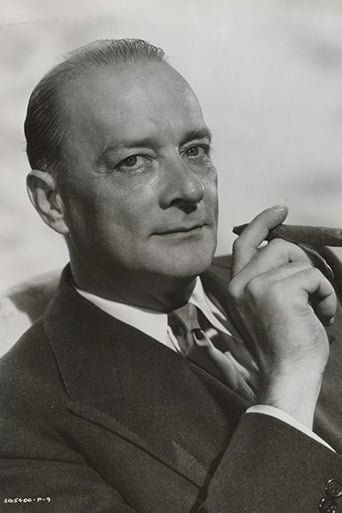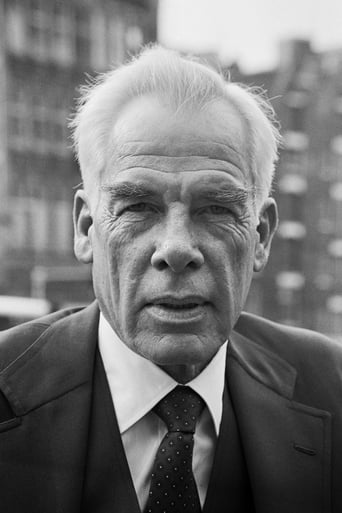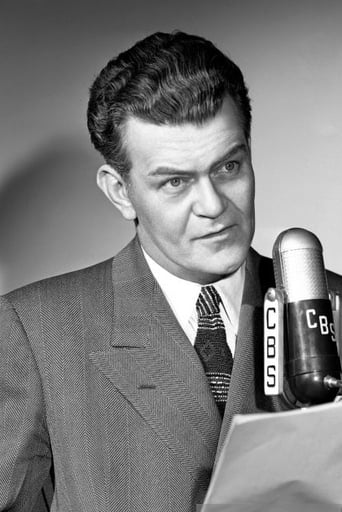alexanderdavies-99382
"The Wild One" was one of the first films of which would establish a new kind of anti-hero in Hollywood - the rebel. Marlon Brando successfully exploiting this burgeoning character, would lead to a whole string of Hollywood movies where the main character would be at odds with any kind of authority. Actors like Montgomery Clift and James Dean would personify such characters. Released in 1953, "The Wild One" was met with controversy and was banned in Great Britain for quite a while. In all honesty, the film is rather mild and tame when viewed in today's world. Judged on its own merits, the film is a well made one. It has some good dialogue, steady direction but the film also makes a valid point with regards to those people who are supposedly civilised. "The Wild One" was based upon an incident which took place in the late 1940s, where 4,000 gang members on bikes proceeded to terrorise a small American town. That doesn't occur in quite the same way in this film as the bikers in question are more prone to larking about, rather than inflicting any real harm or posing a threat. Interestingly, it is some of the local inhabitants who display a good deal of aggression and volatility. It is they who turned out to be the real villains of the piece. Marlon Brando plays the leader of one of the gangs but his acting ability isn't stretched all that much. It's not that he isn't giving a performance but quite wisely, he doesn't give his character any more depth than is necessary. However, there is one scene where Brando lowers his guard just long enough for us to see a more vulnerable side to him. Such a moment would only show itself whilst the character is alone. "The Wild One" wasn't a particularly expensive film to make but it didn't need to be, in order to be effective.
tieman64
"There are language forms that are considered impolite and out of order. No matter what truths these languages might be carrying, they will often get you barred from many arenas. On the other hand, polite, formal language is allowed almost anywhere, even when communicating nothing but hatred and violence. Power always privileges its own discourse whilst marginalising those who would challenge it, or that are the victims of its power." - Junot Díaz Stanley Kramer's "The Wild One" opens on the dusty streets of California. Young Johnny Strabler (Marlon Brando) then slides into view, perched atop a motorcycle and dressed in sunglasses and leather. He's flanked by the Black Rebels, a boisterous motorcycle club who drift from town to town.Early scenes find Strabler and his gang disrupting a community motorcycle race. Not allowed to participate, Strabler steals a second place trophy, an irreverent gesture which Kramer knows speaks only to Strabler's insecurities, sense of inferiority and desires to belong. Subsequent scenes watch as Strabler and his boys journey to a nearby town. Here they collide with irate townsfolk. These townsfolk, bloodthirsty and seeking to purge their town of the Black Rebels, attack Strabler. Strabler is eventually rescued by both Kathy Bleeker (Mary Murphy) and a county sheriff (Jay C. Flippen), two kindly types who refuse to quietly sit by.Kramer, never one for subtlety, lays his allegory on thick: the counterculture is riding into the heart of conservative America and all hell will break loose unless compassionate folk stop crotchety reactionaries from beating up on rebellious youth who, though misunderstood and deserving of the occasional ruckus, should nevertheless learn to appreciate adults, conformity and polite manners. In other words, the film's your typical Stanley Kramer production, calculated to please any and everyone.Despite this, "The Wild One" was deemed positively shocking. It was accused of promoting criminality, banned by British censors, not released in England until 1968, and attacked by conservative groups in America, who deemed it a "plot to undermine America's youth". It was also turned down by censors at the Breen Office, who decided that it breached the Motion Picture Production Code, a ruling which forced script alterations. For Kramer, though, Strabler's just a confused guy looking for love. "What are you rebelling against, Johnny?" a character asks him early in the film. "Whataya got?" he sullenly replies, not quite sure himself. Like a canary in a coal mine unable to articulate exactly why its lungs burn, social rage, and the violent outbursts it oft leads to, is always felt worse by those who can't articulate disaffection.One must remember the context in which "The Wild One" was released. This was a world of picket fences, Eisenhower traditionalism, white-collar nine to fives, corner churches, grey flannel suits, the Korean war, McCarthyism, a burgeoning hyper-consumerism and corporate conformity. Under this all lay the ticking time-bomb of the Beats, the hippies, the jazz and folk scenes, Kerouac, rock and roll, irate leftists and the sexual revolution. Change was coming, baby, and daddy was nervous.Today's fad is oft tomorrow's joke, so as emblems of rebellious machismo, the Black Rebels are mostly ridiculous. They strut about like effete peacocks, straddling engines, disturbing the peace and spouting a strange blend of Beat-lingo, jazz slang and 1950s hipster. And because today's conception of masculinity is always the camp comedy of tomorrow - displays of masculinity are always bound to insecurity and so are always eventually deemed effeminate, dweeby or camp – contemporary audiences will no doubt find Brando and his buddies giant laughing stocks.But behind such dated rituals, Kramer teases out a sense of youthful disaffection that is virtually timeless. Strabler's alienated, melancholic, wants to fit in, but refuses to abide by a post-War conformity that he finds abhorrent. For Strabler, only two choices thus exist: playing by the rules or (self) destructive violence. Audiences loved this. Brando's sexily wounded persona would tap into a zeitgeist, seduce young men and women and become the template for later icons like James Dean and Paul Newman. One of the first characters to exploit the "misunderstood youth vs the establishment" gap, from Brando can be drawn a line to everything from "Rebel Without a Cause" to "Jailhouse Rock" to "Easy Rider".Structurally and aesthetically, "The Wild One" plays like a western, motorcycles replacing horses, leather jackets replacing spurs and pistols. Brando's the archetypal drifter, who rides into a dusty, inhospitable town. Ironic for a film about supposed "hooliganism", the film's at its best when Brando's simply slouching over tables or quietly eyeballing the pretty Kathie Bleeker. All desire, pain and subtle insecurity, his character possesses a self-awareness which others in the Black Rebels do not. Strabler's aware of how others perceive him. He feels their gaze. And he knows that Kathie in particular sees through all his calculated posturing. Around her he feels ashamed of his speech, his lifestyle, attempts to disguise his tongue, but she doesn't care. More maternal figure than lover, Kathie sympathises with the unspoken roots of wild ones. The film then ends with Kathie rescuing Strabler, though the two can't remain together. Strabler drives off, dust in his wake. The mighty Lee Marvin co-stars.8/10 – See "Jimmy's Hall" (2014).
Hot 888 Mama
. . . but, sad to say, Marlon Brando as "the wild one" isn't very. Brando as Don Vito Corleone would flick off Brando's lisping Johnny Strabler like a stray booger. Brando as Fletcher Christian (1962 version) would send Johnny off on a long walk from a short plank. Brando as crazy old coot Col. Walter E. Kurtz literally would carve up this Johnny punk for lunch. The one good thing that can be said about Brando's "big career break" in THE WILD ONE is that at least he did not make his film debut in a white lab jacket clearing crap out of rat cages as did Clint Eastwood in REVENGE OF THE CREATURE (1955, in which Dirty Harry played "Jennings," who did not even merit a first name). It's no wonder that the one passable chick in this "terrorized" town, Mary Murphy as "Kathie," is smiling as Johnny bikes out of her dirt-street hamlet; she's probably thinking, "Good riddance to rotten rubbish."
